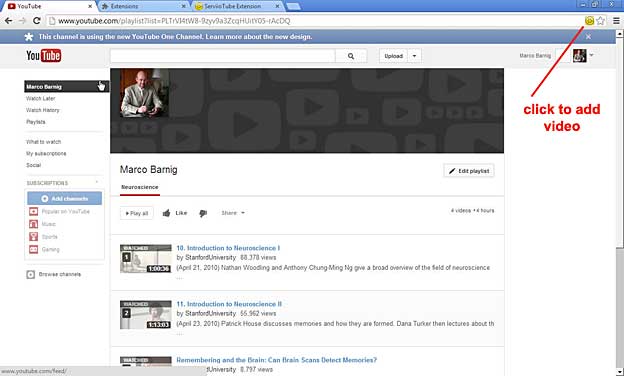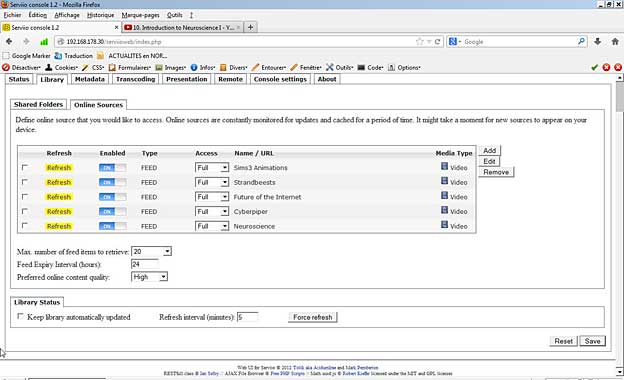Today I enhanced my Serviio DLNA server hosted on my Synology DS412+ diskstation to show videos of my Youtube playlists on my connected TV’s. I installed the Youtube online content plugin (Youtube.groovy, version 29.12.2012) in the NAS /volume1/public/serviio/plugins folder. I stopped and restarted the Serviio server in the NAS package center to activate the plugin.
The next step was to install the chrome extension Serviiotube in the Chrome browser which allows to add videos and playlists in the Serviio Online Resources Library from the Youtube webpage.

Serviiotube in Youtube
The resulting source page in the Serviio webconsole is shown hereafter :

Serviio Console, Online Sources
